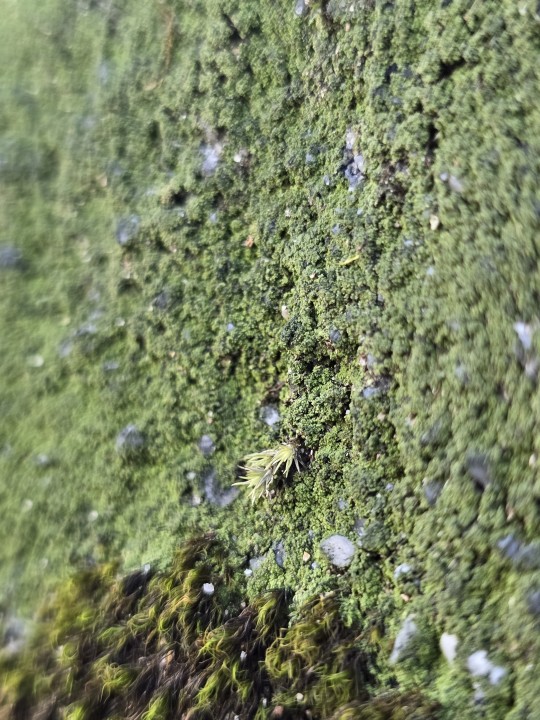#micareopsis irriguata
Explore tagged Tumblr posts
Text


A recent trip to Red River Gorge has supposedly led to some interesting findings, or rather a potential accident of some kind. I posted this lichen image on I naturalist to see what it was as I was very unfamiliar with anything that could compete or mat this aggressively to the point that even moss was having a hard time establishing past it. My friend Shaun managed to correct my attempt at Identification and he seems pretty sure about the ID all though im waiting on two others to comment on it as Ide prefer curators in something like this.
Due to recent storm damage and downed trees it has now become an optimum time to look at dry bark before rot starts phasing in and humidity invites more fungus and moss not associated high light exposure and upper canopy of trees in the gorge, it also luckily has caused unofficial trail hikers to learn to meander or create new trails via bushwack and elephant path(desirepaths) in order to relocate the original unofficial trails since trail maintenance only exsists for those that are declared official trails. During one such meander I accidentally walked past this lichen for the first time in my life.
Micareopsis irriguata
Sandstone Sea fog/foam lichen.
A species only mentioned in the Keys that I have but has no photos available due to it's scarcity, it has 1 report in Kentucky besides this current one in Red River Gorge and has plenty of potential to be found in many locations where sandstone ravines are found (WV, KY, TN, IL, IN, OH, PN, AL.) Yet reports are minimal and records are scarce in herbariums. Right now for example I nat has less than 20 reports on the species as a total.
Surrounded by some moss, Cystocoleus ebeneus (black hair lichen); There are actually other lichens in this shot too that are not easily identifiable and what may be Leptogium spp. of some kind and or Scytinium spp. or perhaps some mealybug like look alike maybe even a pin lichen. Found on a humid exposed sandstone cliffs near the base of cliff face, Bison Way downsend trail near the upsend roots to Adena Arch shortcut.
Sea foams and rain forest lichens are very similar and are common names for a group of species associated with a bullate(thick bumpy, often with convex tile-like areoles) thallus that is somewhat reminiscent of foamy surfaces. These aren't necessarily uncommon nor rare in rocky areas but some are definitely less present due to inland association or coastal association and microclimates. This was more of a happy accident to me, I was curious about it, hadnt noticed it in the area before, didn't know what it was at all, so I took a picture to look it up as it was way more dense than a powder lichen (like Lepraria finkii or Botryoleparia lesdainii and had apothecia instead of what I associate with almost ascoma like reproductive structures that are often seen on things like the mucose thalloid mats of Multiclavula mucida and thicker crustose hard algal like thalloid mats like those associated with Dibaeis spp, or perhaps Bacidinia delicata and Baeomyces rufus. Similarly it is notable that im not the only one who associates these species at all because we can juxtapose the name sake of Micareopsis spp., which could of used oides as well to mean "looks like", to Micarea spp.
Micarea spp. or "the lumpydumps" are often mucus like thallus that form thalloid mats on rotting wood and can appear to look like Multiclavula mucida at first glance or similarly Ive looked at Arthonia ruana pictures online which is also an algal film species. So when I speak I mainly am refering to the conifer wood species Micarea (prasina, micrococca, and maleana) respectively. Each associated with wood substrate only( again specifically conifers that are in various stages of decay in humid microclimates) unlike the sandstone dwelling Micareopsis irriguata.
38 notes
·
View notes